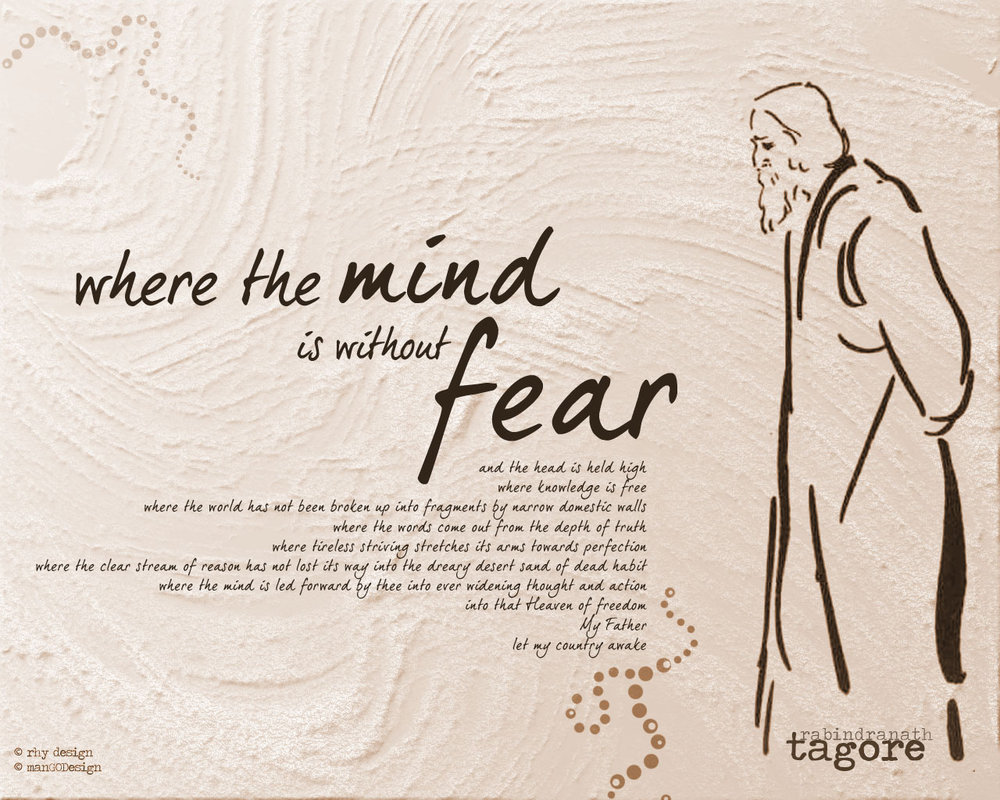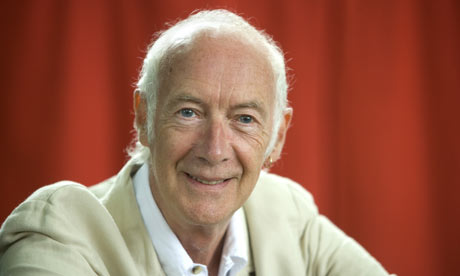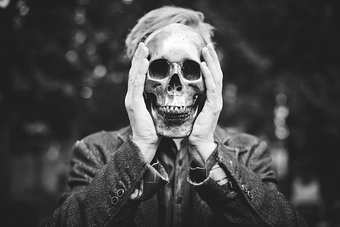About the poet:
Robert Browning (1812-1889) was born at Camberwell to a banker father. He was not taught in a very traditional manner and was allowed to follow his lifelong passion to study unusual subjects. He wrote his first poem at the tender age of 12. He was very much influenced by Shelley. His first work of eminence is Pauline (1833) which shows a firm influence of Shelly. Paracelsus(1835) brought to fore Browning’s predominant ideas – that a life without love must be a failure, and that God is working all things to an end beyond human diving. All his works bear on his central bile that life must ever be a striving for something beyond our reach, and it is “God’s task to make the heavenly period perfect the earthen.” The obvious optimism of
What I aspired to be,
And was not, comforts me.
has been presented by more modern critics as a facile shirking of life’s complexities.
Some of his best-known works are – The Pied Piper of Hamlin, Men and Women, Childe Roland to the Dark Tower Came. He is recognised as the person who popularised the form of Dramatic Monologue. Though recognition was slow to come to him like Wordsworth he saw his name being established high among his fellows.
About The Last Ride Together:
Last Ride Together (hence forward LRT) is a Dramatic Monologue of a disappointed lover. The LRT depicts the emotions of a ride, which a finally dismissed lover has been allowed to take with his beloved. First published in Men and Woman (1855), this poem has won critical praise as one of the finest Dramatic Monologues of Browning. There is a perfect fusion of language thought and mood to the complete exclusion of the objective world. The speaker, a lover, is rejected by his sweetheart who simply doesn’t love him anymore but the rejection instead of filling him with bitterness or despair leaves him with an ideal of love which sublimates his feelings and elevates the human in him into almost the divine. For this transfiguration of his failure in love which makes him feel superior to the statesman, soldier, poet, the sculptor and the musician. He blesses the woman but asks for only a memory of the hope she gave and her ‘leave for one more ride’ with him. In a moment of exultation, he dreams of the world suddenly coming to an end so that he may find himself riding into eternity in the company of the woman he loves with nobility. However, the last two stanzas of the poem dwell in sheer philosophy which could remind one of the philosophical perplexity of the metaphysical poems.
The Setting of The Last Ride Together:
The setting of the poem is a romantic one where anticipation meets fulfilment. It seems that the poem is set sometimes around evening as it is quite common to lovers to meet in evening. Usually, the lovers met at the Hyde Park and the setting seems to be the same. As already mentioned, the mood is that of anticipation. The poet is caught at a crucial moment in his life where his fate is already decided in love. He has been rejected by his beloved. Yet he hopes against hope to get one last ride with his beloved. He is waiting in patience with a bated breath to claim his request. He is granted that and then the mood of the poem changes from anticipation to jubilance. As the poem progresses the speaker confirms his views about life and love. It shows a phoney complacency. Further, the mood develops to philosophical rumination as the speaker waxes philosophy of life to a perhaps already bored lady which in a lighter vein might lead us to believe that that indeed was the last ride of the speaker.
Stanza wise summary of The Last Ride Together:
The first stanza presents a self-consolation. It’s based on the underlying theory of ‘blame it all on fate’. Of course, the poem talks about love and its attendant failures. The speaker thinks that failure is inevitable as he himself has failed. He is attempting to reduce his pain by trying to curtail his desires. Words are so chosen to convey the feeling of polite resignation and acceptance of defeat. The word ‘since’ is used five times in the same paragraph which in one hand may indicate to the fact that Browning got involved in an emotional flow and lost control over his poetic polish of words. Moreover, the diction is superficial, and of superhuman psychology, because a man who has been ditched can’t have too many good things to say about the former flame unless of course, he is ironical about it. Generally, browning though a Dramatic Monologist is one of the most profound lyricists which can be determined by the rhyme scheme – aa, bb, caa, bb, c and the predominant rhythm i.e. iambic pentameter. In fact, the whole paragraph is rhetorical.
The second stanza deals with the anticipation of a response by the speaker from the mistress. It is this dilemma and waits for the answer that contributes to the dramatic effect of the poem. The stanza progresses thus – from spine chilling excitement and anticipation to joy to relief and finally to ecstasy. The images of the mistress bending her brow, her “deep dark eyes”, her breathing and consequent heaving of the bosom and her blush conveys an almost erotic charm to the poem. In a superb metaphor – “With life or death in the balance”. The speaker compares yes with life and no with death. Rhythm and rhyme add a lyrical charm to the dramatic poem. The diction provides a picture of the action in the man with which Browning was more concerned. It clearly brings out the anxiety and the emotional turmoil in the speaker’s brain. Words like – ‘bent that brow’ refers to the brooding of the lady over the proposal. ‘Fixed’ and ‘breathing’ clearly brings out the anxiety of the speaker. The condition of ‘yes and ‘no’ has been beautifully painted as ‘life’ and ‘death’ respectively. The stanza could also be memorable for the line – “Who knows but the world may end tonight”. This line affirms the stupid optimism of the speaker who becomes as a much a butt of ridicule as the people he satirizes for their failures.
The third stanza deals with the beautiful feeling that follows after being with one’s beloved the feeling of being on the top of the world after achieving one’s goal. It also deals with the more physical part of love. The tone is of being overwhelmed in love in which everything is blessed – “. . . benediction. . . /and . . . at once”. Towards the end, however, the tone becomes sensual in aspect. The sky of the first four lines is studded with the stars of imageries. The ‘billowy bosomed benediction’ not only brings out a crisp alliteration but also a half personification. The image of a sort of physical if not sexual love comes to our minds by few lines and words like: “Conscious . . . drew”, “down on you . . . near”, “. . . learnt she. . .“, “Thus . . . breast”. The mistress has provided him with more than asked for. The words chosen have created or the words were deliberately chosen to create a calming effect like ‘hush!’, ‘passion drew’, ’fade’, ‘lingered’ which are in tune with theme and tone of the paragraph. Yet the rhythm is itself uncertain which gives the poem its characteristic dramatic tinge.
The next stanza provides us with a touch of Browning’s philosophy. Dealing with the present and stop being bothered about the past. The tone of the poem presents a mix of consolatory and philosophical musings. With the “fluttering in the wind” metaphor, the speaker compares the soul with a long-cramped scroll. In itself, it is a fresh metaphor unparalleled in literature. Though the paragraph is simply composed, the line numbers 35 and 36 express the poet’s genius of moulding ideas into words, and thoughts into language:
“. . ., my soul
Smoothed . . . scroll
Freshening . . . wind.”
Again the stanza doesn’t give us a proper rhythm which acts similar to the last stanza.
Next stanza contains little of artistic or dramatic techniques but more of philosophical elements. The theory of failure is introduced. In order to hide his agony, he deliberately compares himself with those people who had failed in their lives but not with these who have achieved the zenith. It’s a mere acceptance of defeat and on untrue optimism of better chance in future life (heaven). The word ‘hope’ used twice which adds up to the three ‘hopes’ used before; this suggests the disappointment behind the hope cause we speak of a truth only once but we keep on repeating the lie to make it true.
Next stanza presents the philosophical idea that the life of contemplation in love is far greater than the material world. The words to look for in the stanza are – ‘fleshly’, ‘screen’, ‘bosom heave’, ‘many a crown’, ‘heap of bones’. These words do signify the sensuous markers of the poem. The humour is brought back into the poem by the line – “Ten lines . . . “. The stanza deals with the continuity of dreams into reality. The gulf between imagination and creation is shortened. It also deals with the comparison of the life of a statesman and soldier with the life and achievement of a lover and puts the lover and his momentary triumph over the achievements of the statesman and soldier. The speaker’s tone is self-congratulatory because nobody else congratulates him for having the last ride with her beloved. The tone is that of the justification of one’s failure, the tone is of giving a lame excuse. The first four lines are rhetorically interrogational, with a zeugma in line number 56(economising the poem hence making it compact), and a synecdoche in line number 61. The diction is very much pregnant with ideas and suggestions. The words in the beginning of the stanza marches ahead with swords and banners of questions but suddenly halts for the poet to synchronised this stanza with the other ones rhythmically inserts a line that doesn’t seem to be in line with the marching tone of the four previous lines, however, after further scrutinizing we can see that the idea which the line suggests is that the speaker has united his thought and action but the line certainly breaks the rhythm of the stanza and which adds to the disadvantage of the poem. The diction is otherwise straight forward and clearly, brings out the idea which the speaker wants to convey.
The next two stanzas both love and life are painstakingly proven to be better than art, poetry. The last two stanzas wax metaphysical and almost borders on obscurity.
Some online learning platforms provide certifications, while others are designed to simply grow your skills in your personal and professional life. Including Masterclass and Coursera, here are our recommendations for the best online learning platforms you can sign up for today.
The 7 Best Online Learning Platforms of 2022
- Best Overall: Coursera
- Best for Niche Topics: Udemy
- Best for Creative Fields: Skillshare
- Best for Celebrity Lessons: MasterClass
- Best for STEM: EdX
- Best for Career Building: Udacity
- Best for Data Learning: Pluralsight
















